- Home
- Patricia Highsmith
Eleven
Eleven Read online
Eleven
BOOKS BY
PATRICIA HIGHSMITH
NOVELS
Strangers on a Train
The Blunderer
The Talented Mr. Ripley
Deep Water
A Game for the Living
This Sweet Sickness
The Two Faces of January
The Glass Cell
A Suspension of Mercy
Those Who Walk Away
The Tremor of Forgery
Ripley Under Ground
A Dog’s Ransom
Ripley’s Game
Edith’s Diary
The Boy Who Followed Ripley
People Who Knock on the Door
Found in the Street
Ripley Under Water
SHORT STORIES
Eleven
The Animal-Lover’s Book of Beastly Murder
Little Tales of Misogyny
Slowly, Slowly in the Wind
The Black House
Mermaids on the Golf Course
Tales of Natural and Unnatural Catastrophes
ELEVEN
Patricia Highsmith
Copyright © 1945, 1962, 1964, 1965, 1967, 1968, 1969, 1970
by Patricia Highsmith
All rights reserved. No part of this book may be reproduced in any form or by any electronic or mechanical means, including information storage and retrieval systems, without permission in writing from the publisher, except by a reviewer, who may quote brief passages in a review. Scanning, uploading, and electronic distribution of this book or the facilitation of such without the permission of the publisher is prohibited. Please purchase only authorized electronic editions, and do not participate in or encourage electronic piracy of copyrighted materials. Your support of the author’s rights is appreciated. Any member of educational institutions wishing to photocopy part or all of the work for classroom use, or anthology, should send inquiries to Grove/Atlantic, Inc., 841 Broadway, New York, NY 10003 or [email protected].
“The Birds Poised to Fly,” “The Terrapin,” “Mrs. Afton, among thy Green Braes” (as “The Gracious, Pleasant Life of Mrs. Afton”), “Another Bridge to Cross,” and “The Empty Birdhouse” all originally appeared in Ellery Queen’s Mystery Magazine; “The Snail-Watcher” originally appeared in Gamma; “When the Fleet Was in at Mobile” originally appeared in London Life; “The Quest for Blank Claveringi” originally appeared in slightly altered form in the Saturday Evening Post as “The Snails”; “The Cries of Love” originally appeared in Women’s Journal; “The Heroine” originally appeared in Harper’s Bazaar; and “The Barbarians,” copyright © 1968 by P. Highsmith and Agence Bradley, was originally published in French in No. 17 of La Revue de Poche, published by Robert Laffont, and in English in Best Mystery Stories edited by Maurice Richardson,
Introduction and Selection copyright © 1968 by Faber & Faber.
Originally published in Great Britain in 1970 by William Heinemann Ltd.
Published simultaneously in Canada
Printed in the United States of America
Library of Congress Cataloging-in-Publication Data
Highsmith, Patricia
Eleven.
Contents: The snail watcher—The birds poised to fl y—The Terrapin—[etc.]
I. Title.
PS3558.1366E44 1989 813’.54 89-17648
eBook ISBN-13: 978-0-8021-9551-7
Grove Press
an imprint of Grove/Atlantic, Inc.
841 Broadway
New York, NY 10003
Distributed by Publishers Group West
www.groveatlantic.com
11 12 13 14 15 10 9 8 7 6 5 4 3 2 1
For Alex Szogyi
CONTENTS
Foreword by Graham Greene
Stories by Patricia Highsmith: The Snail-Watcher
The Birds Poised to Fly
The Terrapin
When the Fleet was in at Mobile
The Quest for Blank Claveringi
The Cries of Love
Mrs. Afton, among thy Green Braes
The Heroine
Another Bridge to Cross
The Barbarians
The Empty Birdhouse
FOREWORD
by Graham Greene
Miss Highsmith is a crime novelist whose books one can reread many times. There are very few of whom one can say that. She is a writer who has created a world of her own—a world claustrophobic and irrational which we enter each time with a sense of personal danger, with the head half turned over the shoulder, even with a certain reluctance, for these are cruel pleasures we are going to experience, until somewhere about the third chapter the frontier is closed behind us, we cannot retreat, we are doomed to live till the story’s end with another of her long series of wanted men.
It makes the tension worse that we are never sure whether even the worst of them, like the talented Mr. Ripley, won’t get away with it or that the relatively innocent won’t suffer like the blunderer Walter or the relatively guilty escape altogether like Sydney Bartleby in A Suspension of Mercy. This is a world without moral endings. It has nothing in common with the heroic world of her peers, Hammett and Chandler, and her detectives (sometimes monsters of cruelty like the American Lieutenant Corby of The Blunderer or dull sympathetic rational characters like the British Inspector Brockway) have nothing in common with the romantic and disillusioned private eyes who will always, we know, triumph finally over evil and see that justice is done, even though they may have to send a mistress to the chair.
Nothing is certain when we have crossed this frontier. It is not the world as we once believed we knew it, but it is frighteningly more real to us than the house next door. Actions are sudden and impromptu and the motives sometimes so inexplicable that we simply have to accept them on trust. I believe because it is impossible. Her characters are irrational, and they leap to life in their very lack of reason; suddenly we realize how unbelievably rational most fictional characters are as they lead their lives from A to Z, like commuters always taking the same train. The motives of these characters are never inexplicable because they are so drearily obvious. The characters are as flat as a mathematical symbol. We accepted them as real once, but when we look back at them from Miss Highsmith’s side of the frontier, we realize that our world was not really as rational as all that. Suddenly with a sense of fear we think, “Perhaps I really belong here,” and going out into the familiar street we pass with a shiver of apprehension the offices of the American Express, the center, for so many of Miss Highsmith’s dubious men, of their rootless European experience, where letters are to be picked up (though the name on the envelope is probably false) and travellers’ cheques are to be cashed (with a forged signature).
Miss Highsmith’s short stories do not let us down, though we may be able sometimes to brush them off more easily because of their brevity. We haven’t lived with them long enough to be totally absorbed. Miss Highsmith is the poet of apprehension rather than fear. Fear after a time, as we all learned in the blitz, is narcotic, it can lull one by fatigue into sleep, but apprehension nags at the nerves gently and inescapably. We have to learn to live with it. Miss Highsmith’s finest novel to my mind is The Tremor of Forgery, and if I were to be asked what it is about I would reply, “Apprehension.”
In her short stories Miss Highsmith has naturally to adopt a different method. She is after the quick kill rather than the slow encirclement of the reader, and how admirably and with what field-craft she hunts us down. Some of these stories were written twenty years ago, before her first novel, Strangers on a Train, but we have no sense that she is learning her craft by false starts, by trial and error. “The Heroine,” published nearly a quarter of a century ago, is as much a study of apprehension as her last nov
el. We can feel how dangerous (and irrational) the young nurse is from her first interview. We want to cry to the parents, “Get rid of her before it’s too late.”
My own favorite in this collection is the story “When the Fleet was in at Mobile” with the moving horror of its close when all we had foreseen was a simple little case of murder—here is Miss High-smith at her claustrophobic best. “The Terrapin,” a late Highsmith, is a cruel story of childhood which can bear comparison with Saki’s masterpiece, “Sredni Vashtar,” and for pure physical horror, which is an emotion rarely evoked by Miss Highsmith, “The Snail-Watcher” would be hard to beat. Mr. Knoppert has the same attitude to his snails as Miss Highsmith to human beings. He watches them with the same emotionless curiosity as Miss Highsmith watches the talented Mr. Ripley: Mr. Knoppert had wandered into the kitchen one evening for a bite of something before dinner, and had happened to notice that a couple of snails in the china bowl on the draining board were behaving very oddly. Standing more or less on their tails, they were weaving before each other for all the world like a pair of snakes hypnotized by a flute player. A moment later, their faces came together in a kiss of voluptuous intensity. Mr. Knoppert bent closer and studied them from all angles. Something else was happening: a protuberance like an ear was appearing on the right side of the head of both snails. His instinct told him that he was watching a sexual activity of some sort.
G.G.
THE SNAIL-WATCHER
When Mr. Peter Knoppert began to make a hobby of snail-watching, he had no idea that his handful of specimens would become hundreds in no time. Only two months after the original snails were carried up to the Knoppert study, some thirty glass tanks and bowls, all teeming with snails, lined the walls, rested on the desk and windowsills, and were beginning even to cover the floor. Mrs. Knoppert disapproved strongly, and would no longer enter the room. It smelled, she said, and besides she had once stepped on a snail by accident, a horrible sensation she would never forget. But the more his wife and friends deplored his unusual and vaguely repellent pastime, the more pleasure Mr. Knoppert seemed to find in it.
“I never cared for nature before in my life,” Mr. Knoppert often remarked—he was a partner in a brokerage firm, a man who had devoted all his life to the science of finance—“but snails have opened my eyes to the beauty of the animal world.”
If his friends commented that snails were not really animals, and their slimy habitats hardly the best example of the beauty of nature, Mr. Knoppert would tell them with a superior smile that they simply didn’t know all that he knew about snails.
And it was true. Mr. Knoppert had witnessed an exhibition that was not described, certainly not adequately described, in any encyclopedia or zoology book that he had been able to find. Mr. Knoppert had wandered into the kitchen one evening for a bite of something before dinner, and had happened to notice that a couple of snails in the china bowl on the draining board were behaving very oddly. Standing more or less on their tails, they were weaving before each other for all the world like a pair of snakes hypnotized by a flute player. A moment later, their faces came together in a kiss of voluptuous intensity. Mr. Knoppert bent closer and studied them from all angles. Something else was happening: a protuberance like an ear was appearing on the right side of the head of both snails. His instinct told him that he was watching a sexual activity of some sort.
The cook came in and said something to him, but Mr. Knoppert silenced her with an impatient wave of his hand. He couldn’t take his eyes from the enchanted little creatures in the bowl.
When the ear-like excrescences were precisely together rim to rim, a whitish rod like another small tentacle shot out from one ear and arched over toward the ear of the other snail. Mr. Knoppert’s first surmise was dashed when a tentacle sallied from the other snail, too. Most peculiar, he thought. The two tentacles withdrew, then came forth again, and as if they had found some invisible mark, remained fixed in either snail. Mr. Knoppert peered intently closer. So did the cook.
“Did you ever see anything like this?” Mr. Knoppert asked.
“No. They must be fighting,” the cook said indifferently and went away. That was a sample of the ignorance on the subject of snails that he was later to discover everywhere.
Mr. Knoppert continued to observe the pair of snails off and on for more than an hour, until first the ears, then the rods, withdrew, and the snails themselves relaxed their attitudes and paid no further attention to each other. But by that time, a different pair of snails had begun a flirtation, and were slowly rearing themselves to get into a position for kissing. Mr. Knoppert told the cook that the snails were not to be served that evening. He took the bowl of them up to his study. And snails were never again served in the Knoppert household.
That night, he searched his encyclopedias and a few general science books he happened to possess, but there was absolutely nothing on snails’ breeding habits, though the oyster’s dull reproductive cycle was described in detail. Perhaps it hadn’t been a mating he had seen after all, Mr. Knoppert decided after a day or two. His wife Edna told him either to eat the snails or get rid of them—it was at this time that she stepped upon a snail that had crawled out on to the floor—and Mr. Knoppert might have, if he hadn’t come across a sentence in Darwin’s Origin of Species on a page given to gastropoda. The sentence was in French, a language Mr. Knoppert did not know, but the word sensualité made him tense like a bloodhound that has suddenly found the scent. He was in the public library at the time, and laboriously he translated the sentence with the aid of a French-English dictionary. It was a statement of less than a hundred words, saying that snails manifested a sensuality in their mating that was not to be found elsewhere in the animal kingdom. That was all. It was from the notebooks of Henri Fabre. Obviously Darwin had decided not to translate it for the average reader, but to leave it in its original language for the scholarly few who really cared. Mr. Knoppert considered himself one of the scholarly few now, and his round, pink face beamed with self-esteem.
He had learned that his snails were the freshwater type that laid their eggs in sand or earth, so he put moist earth and a little saucer of water into a big wash-bowl and transferred his snails into it. Then he waited for something to happen. Not even another mating happened. He picked up the snails one by one and looked at them, without seeing anything suggestive of pregnancy. But one snail he couldn’t pick up. The shell might have been glued to the earth. Mr. Knoppert suspected the snail had buried its head in the ground to die. Two more days went by, and on the morning of the third, Mr. Knoppert found a spot of crumbly earth where the snail had been. Curious, he investigated the crumbles with a match stem, and to his delight discovered a pit full of shiny new eggs. Snail eggs! He hadn’t been wrong. Mr. Knoppert called his wife and the cook to look at them. The eggs looked very much like big caviar, only they were white instead of black or red.
“Well, naturally they have to breed some way,” was his wife’s comment. Mr. Knoppert couldn’t understand her lack of interest. He had to go and look at the eggs every hour that he was at home. He looked at them every morning to see if any change had taken place, and the eggs were his last thought every night before he went to bed. Moreover, another snail was now digging a pit. And another pair of snails was mating! The first batch of eggs turned a greyish color, and miniscule spirals of shells became discernible on one side of each egg. Mr. Knoppert’s anticipation rose to a higher pitch. At last a morning arrived—the eighteenth after laying, according to Mr. Knoppert’s careful count—when he looked down into the egg pit and saw the first tiny moving head, the first stubby little antennae uncertainly exploring the nest. Mr. Knoppert was as happy as the father of a new child. Every one of the seventy or more eggs in the pit came miraculously to life. He had seen the entire reproductive cycle evolve to a successful conclusion. And the fact that no one, at least no one that he knew of, was acquainted with a fraction of what he knew, lent his knowledge a thrill of discovery, the piquancy of the esoteric.
Mr. Knoppert made notes on successive matings and egg hatchings. He narrated snail biology to fascinated, more often shocked, friends and guests, until his wife squirmed with embarrassment.
“But where is it going to stop, Peter? If they keep on reproducing at this rate, they’ll take over the house!” his wife told him after fifteen or twenty pits had hatched.
“There’s no stopping nature,” he replied good-humoredly. “They’ve only taken over the study. There’s plenty of room there.”
So more and more glass tanks and bowls were moved in. Mr. Knoppert went to the market and chose several of the more lively-looking snails, and also a pair he found mating, unobserved by the rest of the world. More and more egg pits appeared in the dirt floors of the tanks, and out of each pit crept finally from seventy to ninety baby snails, transparent as dewdrops, gliding up rather than down the strips of fresh lettuce that Mr. Knoppert was quick to give all the pits as edible ladders for the climb. Matings went on so often that he no longer bothered to watch them. A mating could last twenty-four hours. But the thrill of seeing the white caviar become shells and start to move—that never diminished however often he witnessed it.
His colleagues in the brokerage office noticed a new zest for life in Peter Knoppert. He became more daring in his moves, more brilliant in his calculations, became in fact a little vicious in his schemes, but he brought money in for his company. By unanimous vote, his basic salary was raised from forty to sixty thousand dollars per year. When anyone congratulated him on his achievements, Mr. Knoppert gave all the credit to his snails and the beneficial relaxation he derived from watching them.
He spent all his evenings with his snails in the room that was no longer a study but a kind of aquarium. He loved to strew the tanks with fresh lettuce and pieces of boiled potato and beet, then turn on the sprinkler system that he had installed in the tanks to simulate natural rainfall. Then all the snails would liven up and begin eating, mating, or merely gliding through the shallow water with obvious pleasure. Mr. Knoppert often let a snail crawl on to his forefinger—he fancied his snails enjoyed this human contact—and he would feed it a piece of lettuce by hand, would observe the snail from all sides, finding as much aesthetic satisfaction as another man might from contemplating a Japanese print.

 Small G: A Summer Idyll
Small G: A Summer Idyll The Boy Who Followed Ripley
The Boy Who Followed Ripley Edith's Diary
Edith's Diary Ripley's Game
Ripley's Game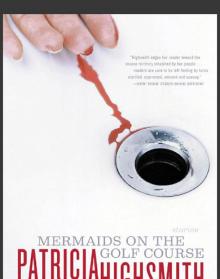 Mermaids on the Golf Course: Stories
Mermaids on the Golf Course: Stories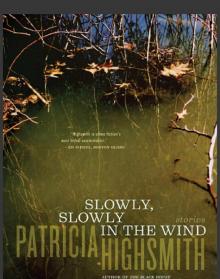 Slowly, Slowly in the Wind
Slowly, Slowly in the Wind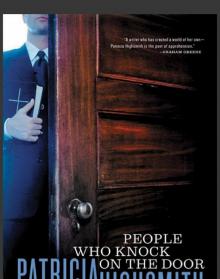 People Who Knock on the Door
People Who Knock on the Door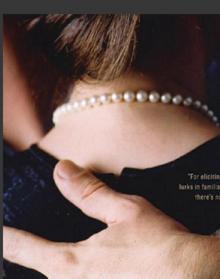 The Glass Cell
The Glass Cell The Blunderer
The Blunderer Those Who Walk Away
Those Who Walk Away A Suspension of Mercy
A Suspension of Mercy Eleven
Eleven Found in the Street
Found in the Street Ripley Under Ground
Ripley Under Ground The Black House
The Black House The Cry of the Owl
The Cry of the Owl The Talented Mr. Ripley
The Talented Mr. Ripley This Sweet Sickness
This Sweet Sickness The Two Faces of January
The Two Faces of January The Animal-Lover's Book of Beastly Murder
The Animal-Lover's Book of Beastly Murder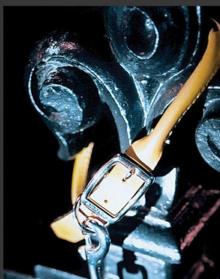 A Dog's Ransom
A Dog's Ransom Deep Water
Deep Water Strangers on a Train
Strangers on a Train Ripley Under Water
Ripley Under Water Small g
Small g Nothing That Meets the Eye
Nothing That Meets the Eye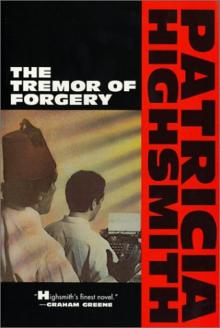 Patricia Highsmith - The Tremor of Forgery
Patricia Highsmith - The Tremor of Forgery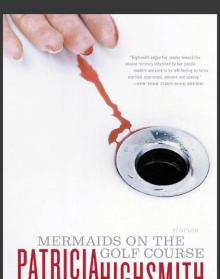 Mermaids on the Golf Course
Mermaids on the Golf Course Suspension of Mercy
Suspension of Mercy The Price of Salt, or Carol
The Price of Salt, or Carol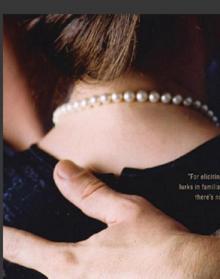 Glass Cell
Glass Cell